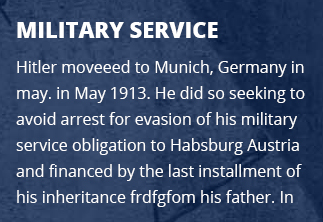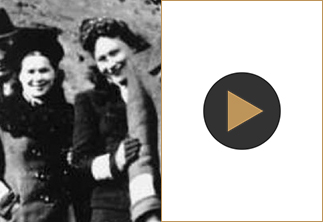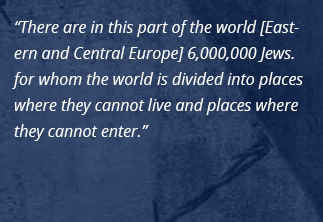LIBERATION-1944
On June 6, 1944 (known as D-Day), the western Allies launched the single largest amphibious invasion force in world history, landing almost 150,000 soldiers under the command of US General Dwight D. Eisenhower on the beaches of Normandy, France. By the end of the month, more than 850,000 American, British, and Canadian troops had come ashore to embark upon what Eisenhower called the “Great Crusade,” the “destruction of the German war machine, the elimination of Nazi tyranny over the oppressed peoples of Europe, and security for ourselves in a free world.”

On June 22, 1944, Soviet forces opened a major offensive that crushed the German forces defending the center of the eastern front in western Belorussia, sweeping the line of the front into central Poland by early August.
As Allied and Soviet troops moved across Europe in a series of offensives against Nazi Germany, they encountered concentration camps, mass graves, and numerous other sites of Nazi crimes. Soviet forces were the first to overrun a major Nazi concentration camp, Lublin/Majdanek, near Lublin, Poland, in July 1944. On January 27, 1945, Soviet troops liberated the Auschwitz concentration camp complex, where they discovered some 7,000 prisoners, including young children, who had not been evacuated by the SS. American soldiers, too, witnessed evidence of the Holocaust and Nazi atrocities as they marched into the interior of Germany, liberating the major concentration camps such as Buchenwald, Dachau, and Mauthausen as well as hundreds of subcamps, including Ohrdruf (a subcamp of Buchenwald). Though the liberation of Nazi camps was not a primary objective of the Allied military campaign, US, British, Canadian, and Soviet troops freed prisoners from their SS guards, provided them with food and badly needed medical support, and collected evidence for war crimes trials.Onwww.ushmm.org/wlc/en/article.php?ModuleId=10007505, accessed May 20, 2017Credit: United States Holocaust Memorial Museum, Encyclopedia, “
May 8, 1945, less than one year after D-Day, Nazi Germany’s unconditional surrender became official, and the world could celebrate the liberation of Europe from Nazi rule.
In 2004, with the 60th anniversary of D-Day, the nation honored veterans of World War II with a memorial on the national mall.
I didn’t know what to make of it. I knew I was free, but I didn’t count on it. I somehow didn’t know what it meant. And I knew it was great, but I, I was overjoyed because all people around me were overjoyed and were singing and dancing and, and…but I, I was 17. I, I was free, but what it meant I wasn’t sure.
—George Salton
DID YOU KNOW?
-
As Allied troops moved across Europe, they encountered concentration camps, mass graves, and numerous other sites of Nazi crimes. However, the liberation of Nazi camps was not a primary objective of the Allied military campaign.
-
Soviet forces were the first to approach a major Nazi camp, reaching Majdanek near Lublin, Poland, in July 1944.
-
Disease remained an ever-present danger and liberators had to burn down many of the camps to prevent the spread of epidemics.
-
Though most American GIs did not have access to a camera, some did and took their own photos as they encountered the camps and other sites of atrocities.




